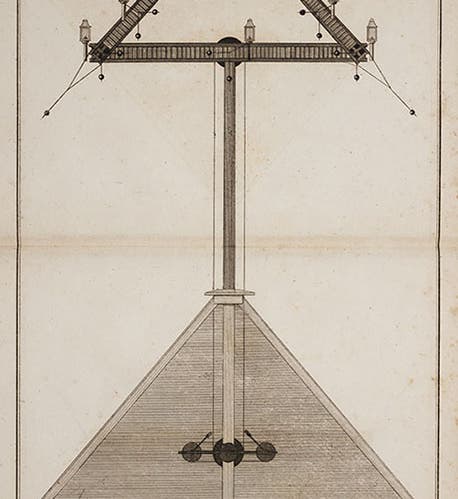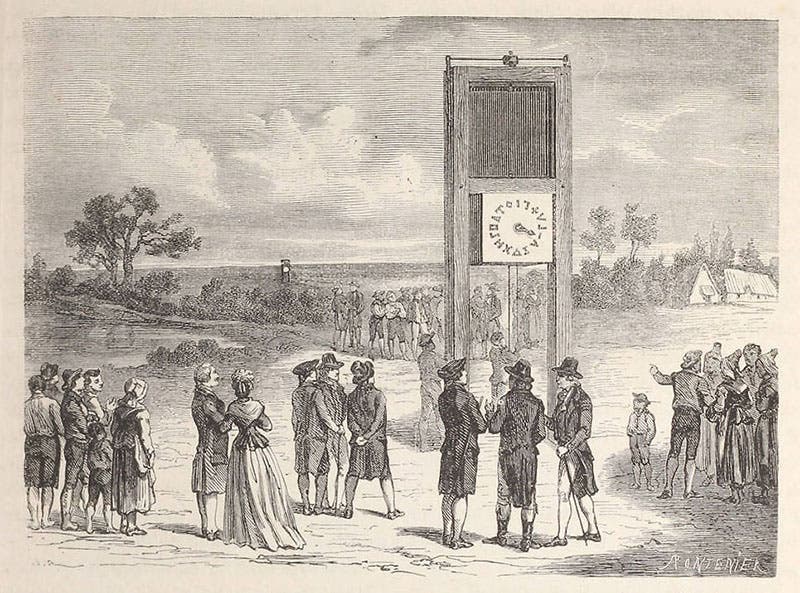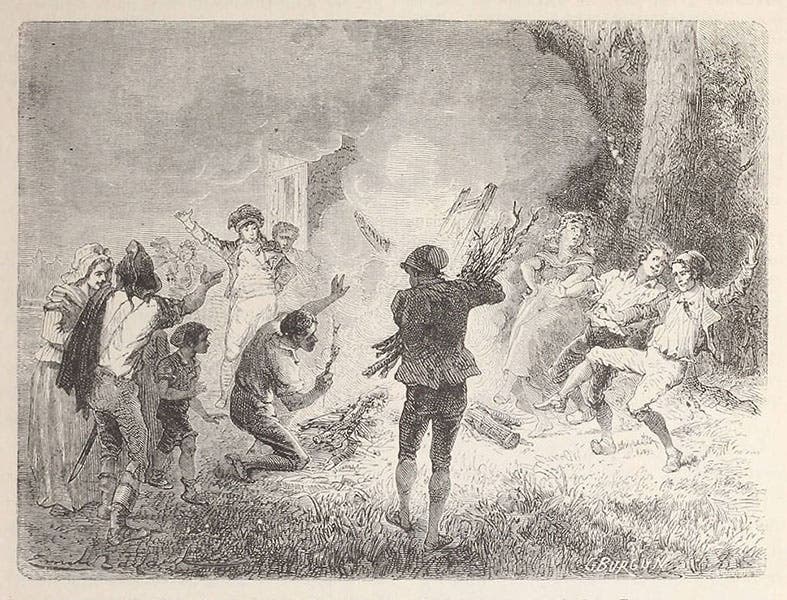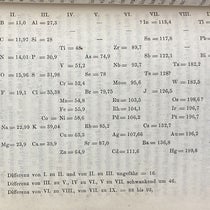Scientist of the Day - Ignace Urbain Jean Chappe
Ignace Urbain Jean Chappe, a French politician and administrator, was born Nov. 26, 1762. Despite being the nephew of Jean-Baptiste Chappe d’Auteroche, an astronomer who became famous for traveling across Siberia to witness the transit of Venus, Ignace was never particularly interested in science. Instead, he studied law and secured a government position, which he promptly lost after the storming of the Bastille in 1789. This setback did not prevent him, however, from remaining involved in politics, and within a few years he had become a member of the revolutionaries’ newly established legislative assembly.
Ignace’s new role left him well-positioned to support his younger brother, Claude, who was trained as a clergyman but had recently been experimenting with a new system to convey information over long distances. In March 1791, Claude had transmitted a message over a distance of nine miles (15 km) using a pair of synchronized clocks and a large wooden panel, which he painted black on one side and white on the other. By rotating the panel, he could indicate when the second hand on both clocks reached a particular number (or set of numbers), corresponding to entries in a codebook.
Enthusiastic about the prospects of his new visual signaling system, Claude approached Ignace, who had become a member of the legislature’s Committee for Public Instruction, which was responsible for reviewing new inventions. Together, Ignace and Claude persuaded the assembly to fund further communications experiments. Over time, Claude replaced his clocks with a series of wooden shutters and later a semaphore setup that he determined was easier to view over long distances. He also started building a chain of signal towers in Paris, but they were burned down by a revolutionary mob who believed they were being used to communicate with monarchists.
Thanks to Ignace’s political connections, Claude obtained permission to rebuild his semaphore towers and hosted a successful demonstration in the summer of 1793. Government officials realized that this new system could transform how the government deployed its military forces, an important consideration since most of Europe’s monarchies were at war with France following the execution of King Louis XVI. They authorized construction of a longer chain of towers linking Paris and the northern city of Lille, a distance of 130 miles (210 km). Messages could now travel between the two cities in a matter of hours rather than days, and soon hundreds of signal towers would crisscross France.
Although Claude normally receives credit for creating modern Europe’s first telecommunications network, Ignace Chappe made several vital contributions to the system’s long-term success. Ignace was one of the first people Claude recruited to manage the network’s operations, a role he continued to play until his retirement in 1823. In addition, Ignace was partially responsible for providing his brother’s invention with a name. Claude had originally referred to his visual signaling scheme as a tachygraphe (Greek for “fast writer”). During a conversation with Ignace, a colleague in the Ministry of War suggested another name that might work better. From then on, the tachygraphe became known as the télégraphe (Greek for “far writer”), a term that inventors like Samuel Morse and Charles Wheatstone later adopted for their electrical signaling systems.
We also have Ignace to thank for much of what we know today about the development of the French semaphore telegraph. In 1824, he published Histoire de la Télégraphie, the first comprehensive discussion of his brother’s experiments and the logistics involved in creating a fully functional telegraph network. We recently acquired a copy of the expanded second edition of this book for our History of Science Collection, and you can see one of its diagrams of a semaphore telegraph tower at the top of this page.
Benjamin Gross, Vice President for Research and Scholarship, Linda Hall Library. Comments or corrections are welcome; please direct to grossb@lindahall.org.









